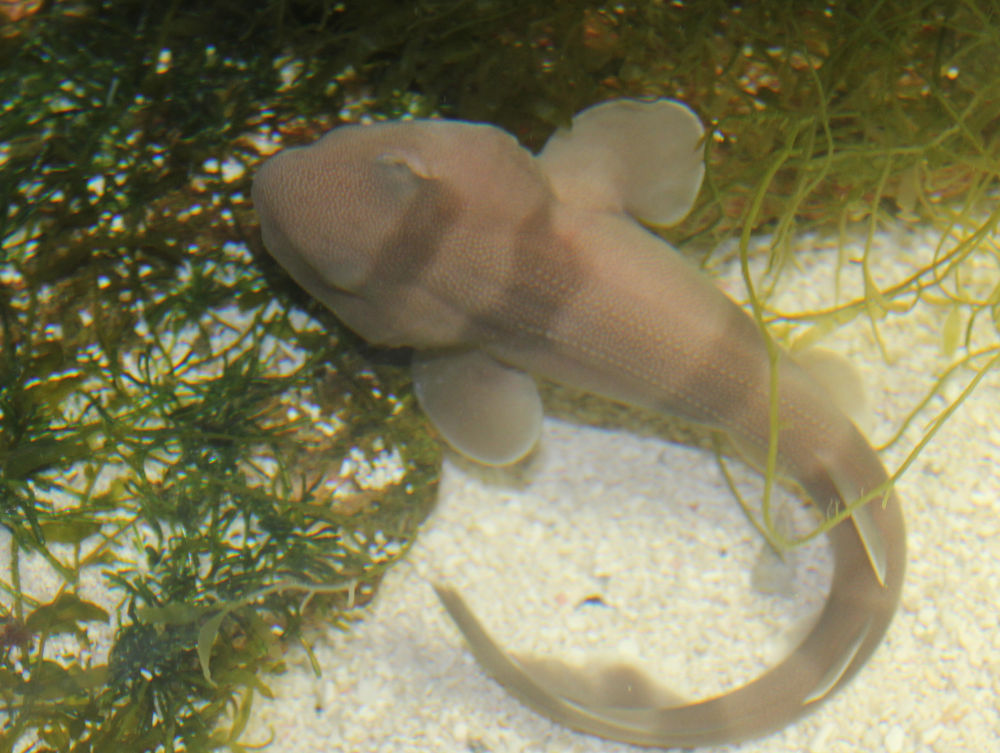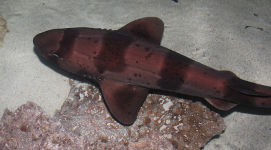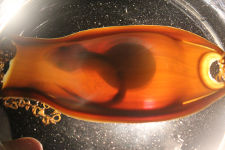Cephaloscyllium umbratile
Jordan & Fowler, 1903
Blotchy swell shark
Classification: Elasmobranchii Carcharhiniformes Scyliorhinidae
Reference of the original description
A review of the Elasmobranchiate fishes of Japan. Proceedings of the United States National Museum, 26(1324), 593–674
A review of the Elasmobranchiate fishes of Japan. Proceedings of the United States National Museum, 26(1324), 593–674
Image of the original description

Cephaloscyllium umbratile Jordan & Snyder, 1903

Cephaloscyllium umbratile Jordan & Snyder, 1903
Synonyms / new combinations and misspellings
Cephaloscyllium aff. umbratile, Scyliorhinus umbratilis, Scylliorhinus (Cephaloscyllium) umbratile
Cephaloscyllium aff. umbratile, Scyliorhinus umbratilis, Scylliorhinus (Cephaloscyllium) umbratile
Description :
Citation: Cephaloscyllium umbratile Jordan & Fowler, 1903: In: Database of modern sharks, rays and chimaeras, www.shark-references.com, World Wide Web electronic publication, Version 01/2026
Please send your images of "Cephaloscyllium umbratile" to info@shark-references.com

Cephaloscyllium umbratile Jordan & Snyder, 1903, © Chris Avila, Toronto Bentic Sharks, Canadian Marine Aquaculture, Toronto

Cephaloscyllium umbratile Jordan & Snyder, 1903, © Chris Avila, Toronto Bentic Sharks, Canadian Marine Aquaculture, Toronto
Common names
 Blotchy swell shark,
Blotchy swell shark,  Draughtsboard shark,
Draughtsboard shark,  Japanese swell shark,
Japanese swell shark,  Swell shark
Swell shark
 Blotchy swell shark,
Blotchy swell shark,  Draughtsboard shark,
Draughtsboard shark,  Japanese swell shark,
Japanese swell shark,  Swell shark
Swell shark
Short Description
Overall color is lighter than C. isabellum, with irregular saddles and numerous blotches and a spotless ventral surface [1658].
Overall color is lighter than C. isabellum, with irregular saddles and numerous blotches and a spotless ventral surface [1658].
Distribution
Western Pacific: Japan to the South China Sea, possibly to New Guinea. Similar to Cephaloscyllium isabellum but the color pattern is different. Source: www.gbif.org
Western Pacific: Japan to the South China Sea, possibly to New Guinea. Similar to Cephaloscyllium isabellum but the color pattern is different. Source: www.gbif.org
Human uses
aquarium: public aquariums
aquarium: public aquariums
Biology
Oviparous (Ref. 559), two tendril eggcases are deposited at one time [1658]. Embryos feed solely on yolk [733]. Eggs hatch after about 1 year and size upon hatching is 16-22 cm [1658]. Found on rocky reefs. Feeds mainly on bony fishes such as mackerel, sardines, filefishes, moray eels, dragonets, flatfishes and cowfishes but also preys on elasmobranchs and squid.
Oviparous (Ref. 559), two tendril eggcases are deposited at one time [1658]. Embryos feed solely on yolk [733]. Eggs hatch after about 1 year and size upon hatching is 16-22 cm [1658]. Found on rocky reefs. Feeds mainly on bony fishes such as mackerel, sardines, filefishes, moray eels, dragonets, flatfishes and cowfishes but also preys on elasmobranchs and squid.
Remarks
shark-references Species-ID=1317;
shark-references Species-ID=1317;
Parasites (arranged by Jürgen Pollerspöck)
Cestoda
Nematoda
Isopoda
Hirudinea
Cestoda
Nematoda
- Porrocaecum cephaloscyllii Yamaguti, 1941 [17029]
Isopoda
- Thaumastognathia bicorniger Ota, Kurashima & Horie, 2022 [30445]
Hirudinea



















